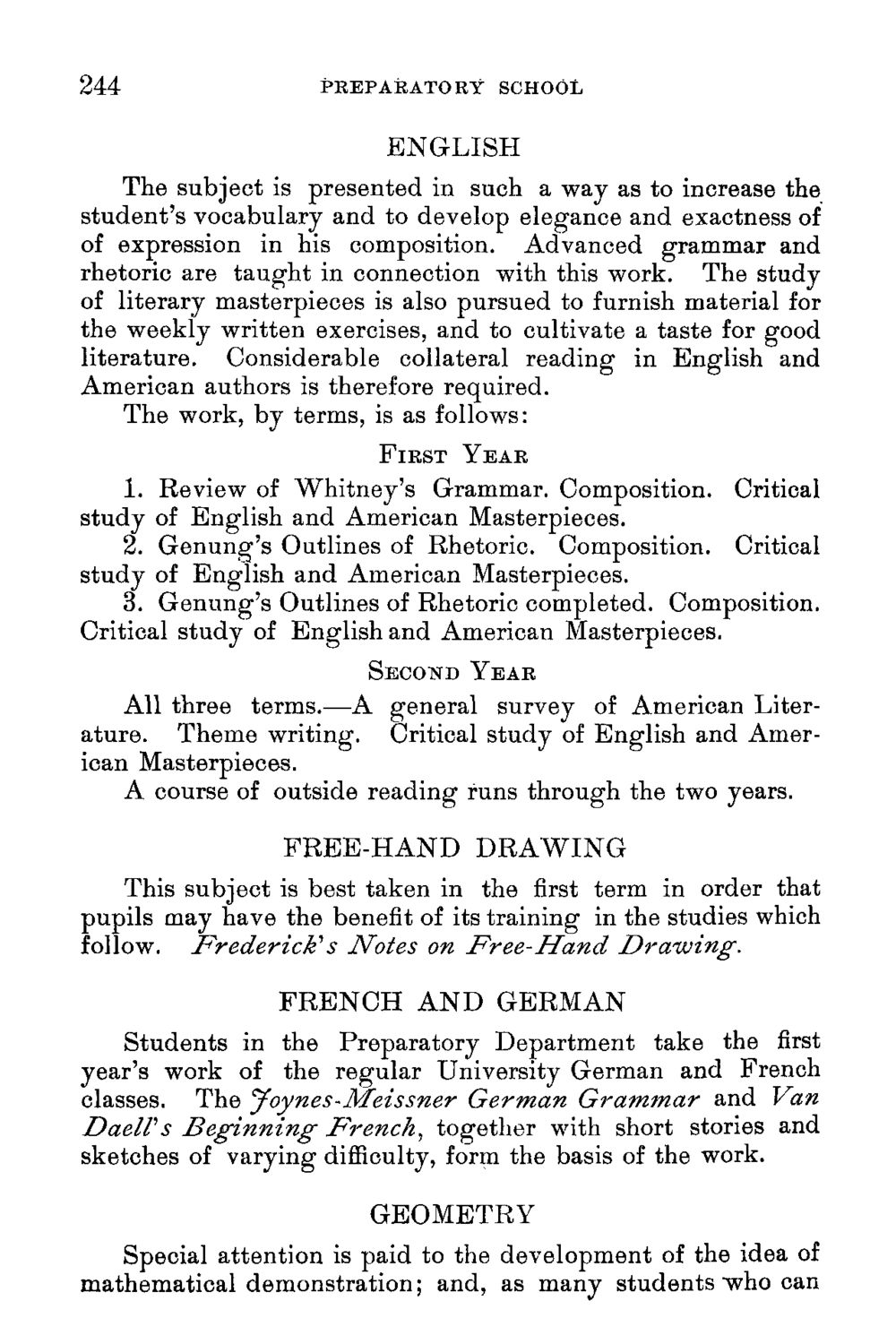Caption: Course Catalog - 1895-1896
This is a reduced-resolution page image for fast online browsing.

EXTRACTED TEXT FROM PAGE:
244 PREPARATORY SCHOOL ENGLISH The subject is presented in such a way as to increase the student's vocabulary and to develop elegance and exactness of of expression in his composition. Advanced grammar and rhetoric are taught in connection with this work. The study of literary masterpieces is also pursued to furnish material for the weekly written exercises, and to cultivate a taste for good literature. Considerable collateral reading in English and American authors is therefore required. The work, by terms, is as follows: FIRST YEAR 1. Review of Whitney's Grammar. Composition. Critical study of English and American Masterpieces. 2. Genung's Outlines of Rhetoric. Composition. Critical study of English and American Masterpieces. 3. Genung's Outlines of Rhetoric completed. Composition. Critical study of English and American Masterpieces. SECOND YEAR All three terms.—A general survey of American Literature. Theme writing. Critical study of English and American Masterpieces. A course of outside reading runs through the two years. FREE-HAND DRAWING This subject is best taken in the first term in order that pupils may have the benefit of its training in the studies which follow. Frederick's Notes on Free-Hand Drawing. FRENCH AND GERMAN Students in the Preparatory Department take the first year's work of the regular University German and French classes. The Joynes-Meissner German Grammar and Van DaelFs Beginning French, together with short stories and sketches of varying difficulty, form the basis of the work. GEOMETRY Special attention is paid to the development of the idea of mathematical demonstration; and, as many students "who can
|